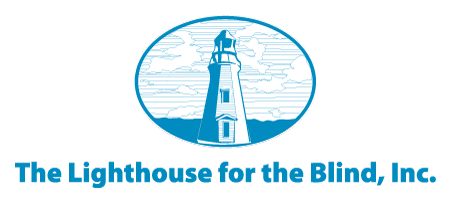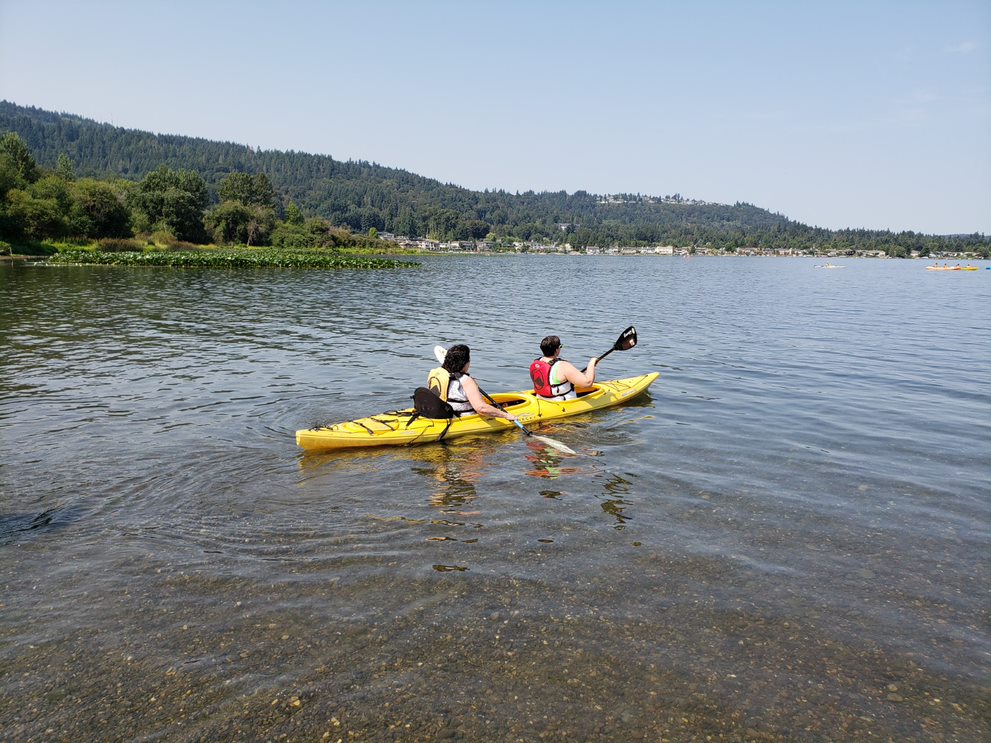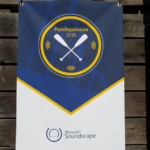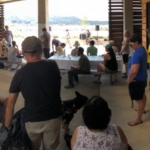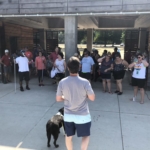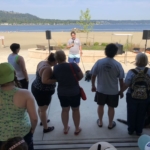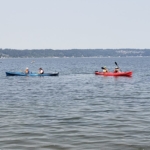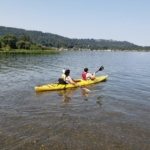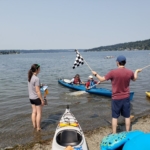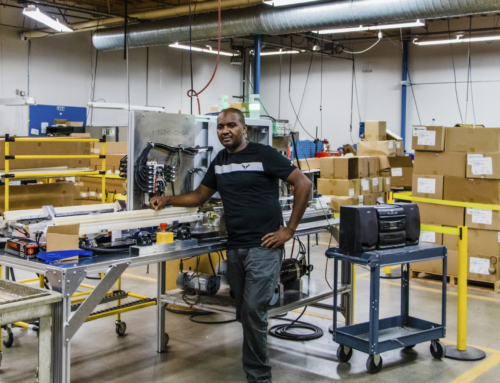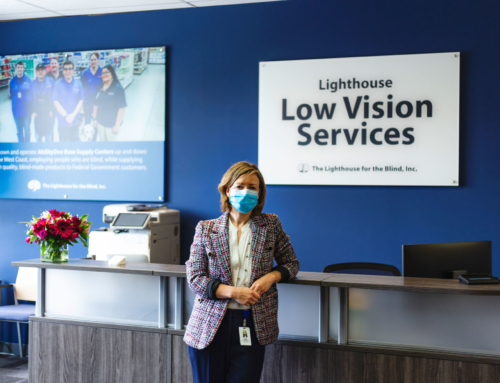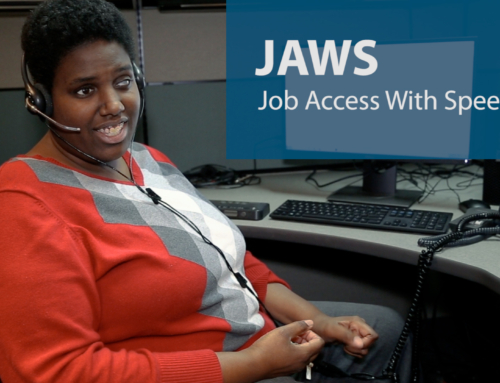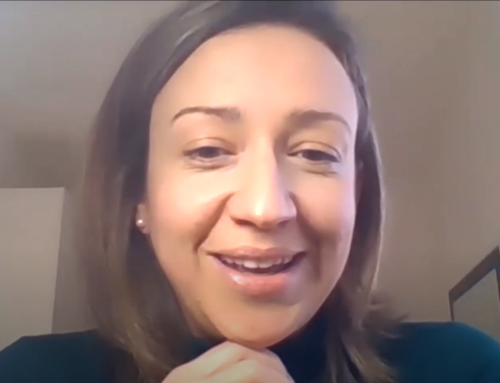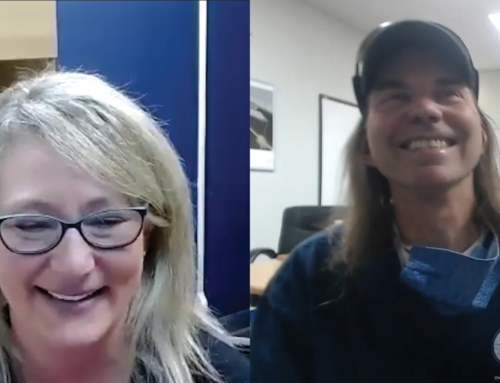By Cindy Van Winkle
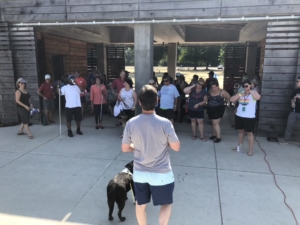
Participants getting ready for the event
On Wednesday, August 8th, ten members of the blindness community gathered at Sunset Beach on Lake Sammamish to take part in Microsoft’s Soundscape Paddlepalooza. This was an event created as part of a hack-athon. The Soundscape team came together for a few days (and probably some night hours too) to create a game on the water that would place virtual targets, using a modified version of the Microsoft Soundscape app to emit an audible beacon to guide the participant to it. Upon reaching the beacon, points would be captured. Oh yes, and this team thought, why not place the participants in kayaks to do this?
When the call went out for volunteers to participate, we were told there was no experience necessary, with either the technology or the sport. They would provide training, a sighted partner, and a fun time! So I thought to my 56-year-old self who has never been on a kayak, “Sure. Why not?”
Lighthouse coworker, Antonio Rozier went with me and we were fortunate to have one of our dedicated volunteers Rick, who happens to be a kayaking enthusiast, offer to drive us to the event and stay with us throughout. In fact, Rick took care of my guide dog Balsa while I had my turn, and Balsa and I are grateful!
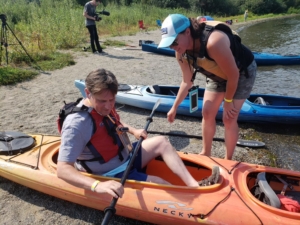
Amos on land getting in kayak
Speaking of Balsa, somehow my name was called in the first group to go out. Mary Bellard from the Microsoft Accessibility team introduced herself as my partner and together we went to receive my orientation to the technology we would be using. But first we were told we had to come up with a team name. I could only think of Balsa, and our team instantly became Balsa Salsa. A pair of bone conduction ear phones were placed over my ears and an iPhone in a plastic sleeve hanging on a lanyard was hung around my neck. I was told I would not have to do anything with the phone itself but I could use the thumb size three-button remote control to navigate through the seven beacons or to adjust the volume.
Then it was time to head down to the water to receive orientation to the kayak. Upon reaching the shore, we were dressed in our fashionable life preservers. The iPhone set over it. Safety first!
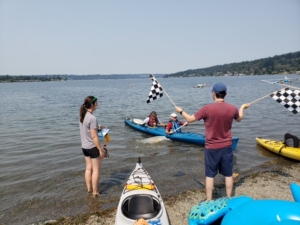
Checkered Flags bringing in Kayak
I had no idea what a kayak looked like. Mary showed me where I’d be sitting in the back and her seat in the front (these kayaks were doubles), and then she handed me the oar. Outdoors for All is an organization that promotes recreational activities for people with disabilities, and so it was no surprise they’d be overseeing this part of the event. They placed a small piece of foam, about one inch long, of the front side of the pole and toward the right so I could hold the oar in the right direction. If you can’t see the ends of the oar, you wouldn’t know which way the paddles are facing. A very simple adaptation to make allowing me access to important information.
Mary and I climbed in, and with a little help from another volunteer, we were out on the water. I began listening for our first beacon which was around 280 meters away and to the left a bit. It was my job to communicate with Mary and share where we needed to go. There were targets but she couldn’t see them only I could hear them. For the next half hour or so, it was me saying things like, “A little left. Okay now straight. 230 meters. A little right. More right. Now left. Straight. 195 meters.” You get the idea. When we were anywhere between 75 and 50 meters away according to the app, it seemed that’s when we’d capture the beacon, earning anywhere from ten to 35 points. There were seven beacons set out in about a 500 meter radius. We had the option to let the game tell us which beacon to go to next or navigate through the beacons using the little remote control. After our first two reaches, I chose to use the latter method. When focused on one, it would say the distance to that beacon. So I’d quickly try and find the one nearest to us at the time.
As is with a hack, the technology did not work perfectly the entire time and several minutes were lost to no signal. I could hear the distance, but not always the ping of the beacon. Moving the phone around eventually seemed to help. A few times I found it facing my chest, flipping over with my movements of paddling. But even in those moments, we were having a blast, the sun was shining, the water was calm and warm, I had an attentive partner, and I was independently captaining a kayak and successfully found all seven beacons, earning the maximum 140 points in 25 minutes!
As we paddled our way back to shore, Mary could see the target, but she did not have to give me any verbal queues because the app didn’t turn off when the game was completed; there was a beacon set at the shore and I just navigated toward the ping.
I must admit, my climbing out of the kayak was not nearly as graceful as getting in, and our 25-minute score only had us placing fifth, but the exhilaration of being able to compete, to experience the freedom of paddling on the water, and truly being the navigator of our team is something I’ll remember always.
On all accounts, the 2018 Microsoft Soundscape Paddlepalooza was everything they said it would be and more! I only wish the event could be packaged up and shared with more people who are blind. It was that much fun — #KayakingHack!
- Paddlepalooza Banner
- Everyone in the Shelter
- Participants getting ready for the event
- Amos Speaking to the group
- Amos on land getting in kayak
- Kayaks on the water
- Cindy and Mary
- Checkered Flags bringing in Kayak
